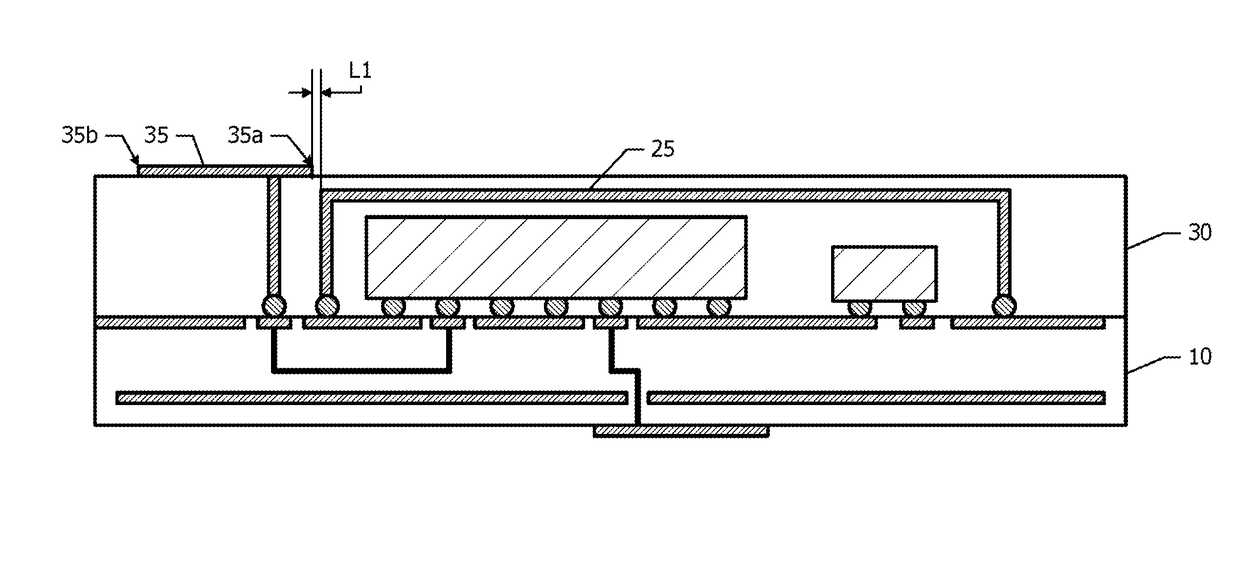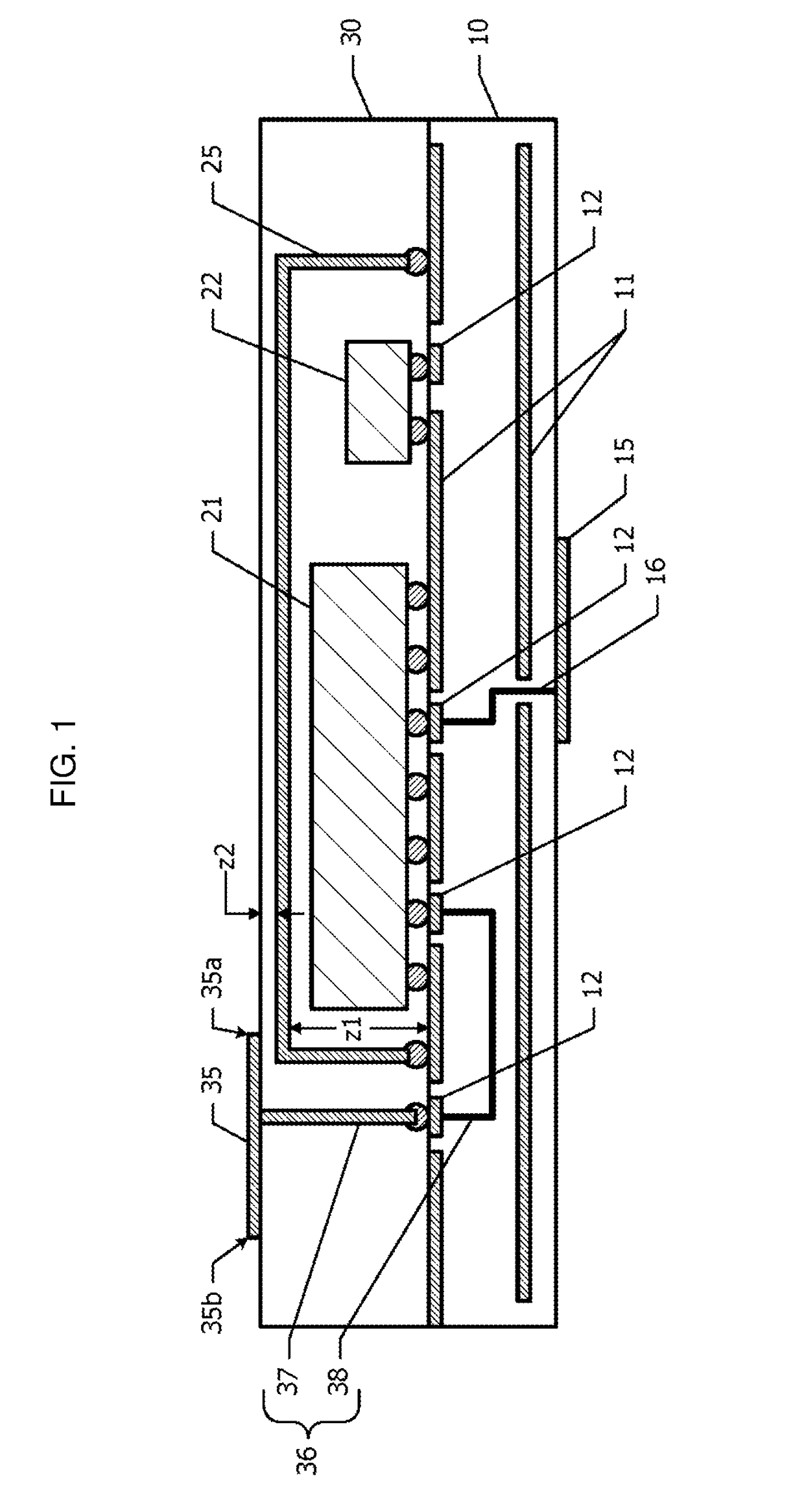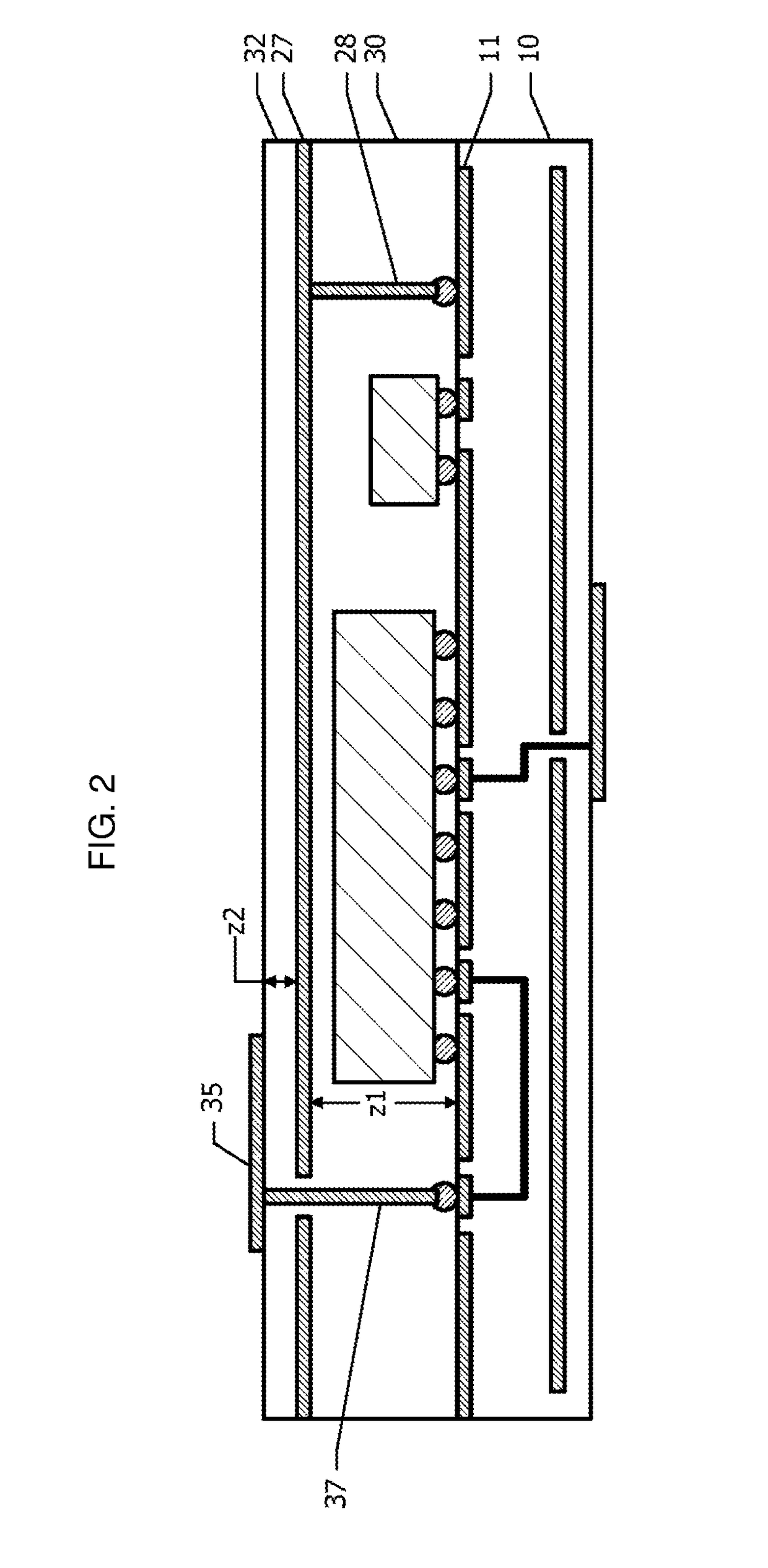Wireless module
a wireless module and wireless technology, applied in the direction of resonant antennas, individually energised antenna arrays, coupling device connections, etc., can solve the problem of difficult to reduce the thickness of wireless modules, and achieve the effect of widening the band increasing the impedance of the first antenna elemen
- Summary
- Abstract
- Description
- Claims
- Application Information
AI Technical Summary
Benefits of technology
Problems solved by technology
Method used
Image
Examples
first embodiment
[0025]A wireless module according to a first embodiment will be described with reference to FIG. 1.
[0026]FIG. 1 is a schematic cross-sectional view of the wireless module according to the first embodiment. Ground planes 11 are provided to a dielectric board 10. The ground planes 11 may be disposed only within the dielectric board 10, or may be disposed both on the surface of the dielectric board 10 and within the dielectric board 10. FIG. 1 shows an example in which the ground planes 11 are disposed on the upper surface of the dielectric board 10 and within the dielectric board 10. A partial region of the ground plane 11 disposed on the upper surface is used as a ground land. Furthermore, signal lands 12 are provided on the upper surface of the dielectric board 10.
[0027]A high-frequency integrated circuit element 21 and a passive component 22 are mounted on the upper surface of the dielectric board 10. Part of terminals of the high-frequency integrated circuit element 21 is connecte...
second embodiment
[0047]Next, a wireless module according to a second embodiment will be described with reference to FIG. 3. Hereinafter, the difference from the first embodiment shown in FIG. 1 will be described, and the description of the configuration common with the first embodiment is omitted.
[0048]FIG. 3 is a schematic diagram of the wireless module according to the second embodiment. In the first embodiment, a portion of the first antenna element 35 overlaps with the shield member 25 in a plan view. However, in the second embodiment, the entire range of the first antenna element 35 is disposed outside the shield member 25 in a plan view. When the spaced distance from the shield member 25 to the first antenna element 35 in an in-plane direction is represented by L1, the spaced distance L1 is not smaller than about 0.
[0049]The positional relationship between the outer edge 35b of the first antenna element 35 and the ground plane 11 is the same as that in the first embodiment. Unlike the structur...
third embodiment
[0051]Next, a wireless module according to a third embodiment will be described with reference to FIG. 4. Hereinafter, the difference from the wireless module according to the first embodiment shown in FIG. 1 will be described, and the description of the configuration common with the wireless module according to the first embodiment is omitted.
[0052]FIG. 4 shows a plan view of the wireless module according to the third embodiment. The first antenna element 35 is disposed on the upper surface of the sealing member 30. The first antenna element 35 has a patch array antenna structure in which a plurality of radiation electrodes 39 are aligned in a row. Each radiation electrode 39 has a substantially square or rectangular planar shape. In a plan view, one edge 39a of each radiation electrode 39 is disposed inside the shield member 25, and an edge 39b opposing to the edge 39a is disposed outside the shield member 25. The other two edges intersect with the contour line of the shield membe...
PUM
 Login to View More
Login to View More Abstract
Description
Claims
Application Information
 Login to View More
Login to View More - R&D
- Intellectual Property
- Life Sciences
- Materials
- Tech Scout
- Unparalleled Data Quality
- Higher Quality Content
- 60% Fewer Hallucinations
Browse by: Latest US Patents, China's latest patents, Technical Efficacy Thesaurus, Application Domain, Technology Topic, Popular Technical Reports.
© 2025 PatSnap. All rights reserved.Legal|Privacy policy|Modern Slavery Act Transparency Statement|Sitemap|About US| Contact US: help@patsnap.com



